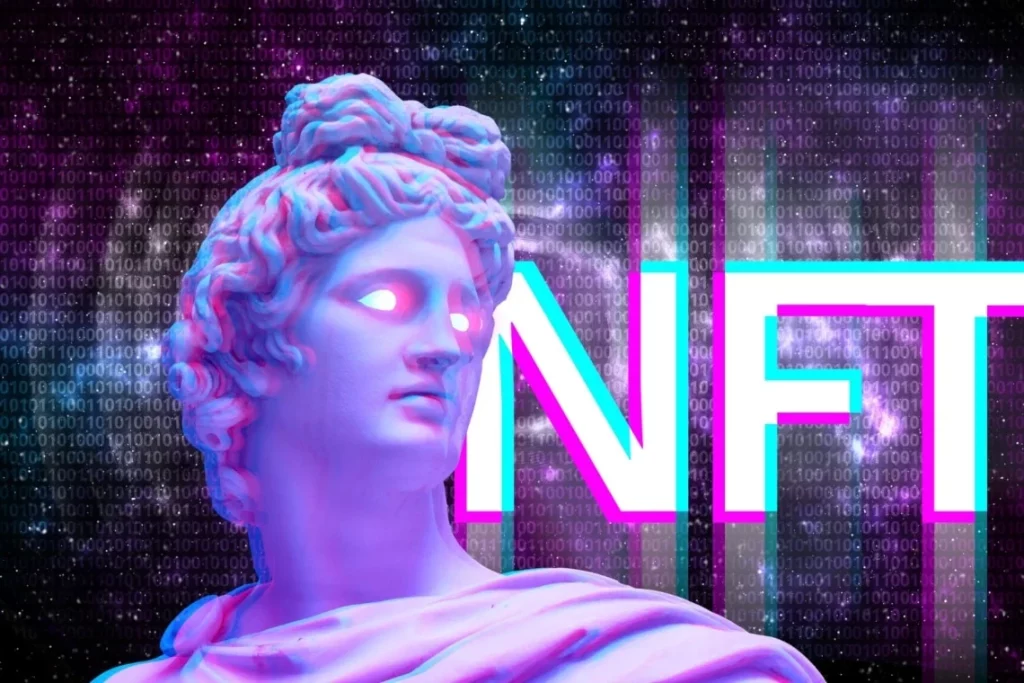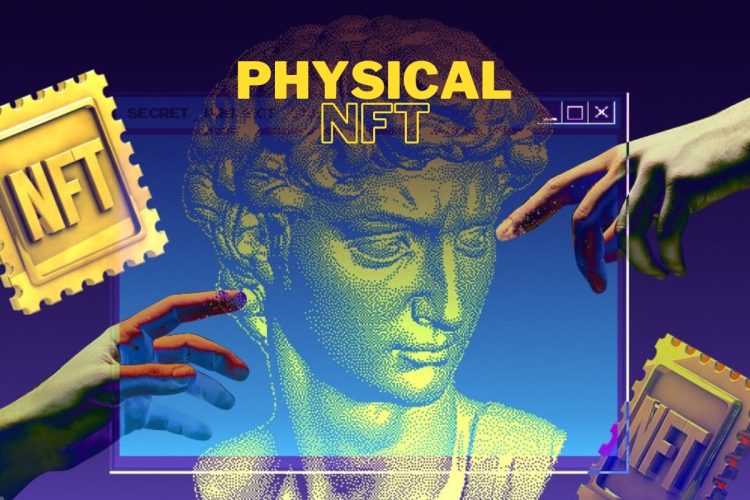1. Introduction
Non-fungible tokens (NFTs) have gained significant attention due to their role in the world of digital art, where they allow artists to tokenize their work, ensuring its provenance and authenticity. However, the potential applications of NFTs extend far beyond just the realm of art. These unique digital assets, which are stored on blockchain networks, can represent ownership of any digital or physical item and have the ability to revolutionize industries ranging from gaming and real estate to entertainment, fashion, and supply chain management.
In this article, we will explore several emerging NFT use cases outside of the art world, highlighting how these innovations are poised to disrupt various sectors.
2. NFTs in Gaming
The gaming industry is one of the most promising sectors for NFT adoption. NFTs can provide new ways to own, trade, and interact with in-game assets, such as characters, skins, and weapons, creating a new economic model within the gaming ecosystem.
1. In-Game Asset Ownership
Traditionally, in-game assets such as skins, weapons, or characters are owned by game developers or platforms. However, with NFTs, players can have true ownership of these assets. NFTs can represent unique game items that players can buy, sell, or trade on secondary markets.
- Interoperability: NFTs can enable assets to be used across multiple games or platforms, creating a broader gaming economy. For example, a special sword or outfit earned in one game could be used or traded in another, giving players greater flexibility.
- Real-World Value: Players can potentially earn real-world money by selling rare or sought-after NFTs. These assets can be traded for cryptocurrencies or fiat currency, turning in-game achievements into tangible economic value.
2. Play-to-Earn Models
NFTs are central to the emerging play-to-earn (P2E) model in gaming. P2E games allow players to earn cryptocurrency or NFTs through gameplay, which can be exchanged or sold for real-world value.
- Tokenized Rewards: In P2E games, players can earn NFT rewards, such as rare items, characters, or land, which can be sold or traded on NFT marketplaces.
- Decentralized Gaming Economies: NFTs can help create decentralized economies within games where the players own and govern the economy, deciding how assets are created, bought, and sold.
3. NFTs in Entertainment and Media
NFTs are transforming not only how we interact with digital content but also how content creators and consumers engage with movies, music, and other media.
1. Exclusive Content and Access
NFTs allow creators to offer unique, exclusive content to their audience. This could be anything from behind-the-scenes footage and limited-edition music tracks to access to live events and private performances.
- Music Industry: Musicians and bands can release exclusive tracks as NFTs, where fans can purchase the rights to these tracks. NFTs can also represent concert tickets, enabling fans to resell or transfer them on a secondary market.
- Movie and TV Content: Filmmakers can offer NFTs as collectibles or limited editions of films, offering exclusive access to early screenings, bonus content, or even credits in the film itself.
2. Digital Collectibles
NFTs provide a new form of digital collectibles in the media industry. For example, limited-edition items like rare movie posters, collectible trading cards, and digital figurines can be tokenized as NFTs, making them tradable assets with real-world value.
- Celebrity and Fan Engagement: Celebrities and influencers can issue NFTs to engage with their fanbase in novel ways, including autographed digital memorabilia, exclusive content, or special perks.
4. NFTs in Real Estate
The real estate industry is another area where NFTs have the potential to make a significant impact. NFTs can tokenize physical properties or virtual land, streamlining transactions, improving transparency, and opening up new opportunities for investment.
1. Tokenized Property Ownership
NFTs can represent fractional or full ownership of real-world real estate, enabling people to buy, sell, or transfer property more easily. This could allow for fractional ownership, where multiple individuals can own a share of a property, democratizing access to real estate investments.
- Reduced Barriers to Entry: By tokenizing real estate, individuals who might not have the capital to purchase an entire property can now invest in fractions of a property through NFTs, broadening the pool of potential investors.
2. Virtual Real Estate
In addition to physical real estate, virtual worlds like Decentraland and Cryptovoxels allow users to buy and sell virtual land as NFTs. These virtual properties can be developed, rented out, or sold for profit.
- Metaverse: Virtual real estate in the metaverse is gaining popularity, with companies and individuals purchasing land to build virtual offices, shops, or entertainment venues. NFTs serve as proof of ownership for these digital assets.
5. NFTs in Supply Chain and Provenance Tracking
NFTs are also being explored as a means of enhancing transparency and traceability in the supply chain. They can be used to track products as they move through the production process, ensuring their authenticity and origin.
1. Provenance of Goods
For luxury goods, food products, or pharmaceuticals, NFTs can serve as a digital proof of authenticity and ownership history. Each time a product changes hands or undergoes a process, the event can be logged on the blockchain, creating an immutable record of its journey.
- Anti-Counterfeiting: By tracking products with NFTs, counterfeit goods can be identified and prevented from entering the market. For example, luxury brands can issue NFTs to prove the authenticity of their products.
- Ethical Sourcing: Consumers can verify whether the products they purchase were sourced ethically and sustainably by viewing the NFT’s traceable history.
2. Tokenization of Physical Goods
NFTs can also be used to represent physical items like electronics, fashion products, or art, providing a way to track their ownership and history. For example, a luxury watch might come with an NFT that represents its provenance, ownership history, and authenticity.
6. NFTs in Intellectual Property (IP) and Licensing
Intellectual property (IP) rights, including patents, trademarks, and copyrights, can be tokenized using NFTs to simplify the licensing process, reduce infringement, and provide more efficient management of IP assets.
1. Tokenizing IP Rights
NFTs can represent ownership of intellectual property, allowing creators and innovators to license or sell their rights in a transparent and secure way. This can streamline the licensing process and enable automated royalty payments.
- Automated Royalties: Smart contracts embedded within NFTs can automatically distribute royalties to creators whenever their intellectual property is used or licensed, making the process more transparent and efficient.
2. NFTs for Digital Media and Patents
In the world of patents, NFTs can help manage and protect digital patents and copyrights, ensuring that creators receive fair compensation for the use of their innovations.
- Patent Tokenization: Instead of traditional patent registration, patents can be tokenized as NFTs, offering a digital certificate of ownership and simplifying the process of licensing, selling, or transferring patent rights.

7. NFTs in Education and Certification
The education sector can also benefit from NFTs in various ways, especially when it comes to certifying qualifications and verifying educational achievements.
1. Credentialing and Certification
NFTs can be used to issue digital diplomas, certificates, and other educational credentials, ensuring that they are tamper-proof and easily verifiable.
- Immutable Records: Educational institutions can issue NFTs as permanent, verifiable records of academic achievement. This allows employers, other educational institutions, and third parties to quickly verify the authenticity of the credentials.
2. Decentralized Learning Platforms
NFTs can be used within decentralized educational platforms, allowing students to own and sell their educational achievements. For instance, students could purchase or earn certificates and credentials that they could later trade or display.
8. NFTs in Fashion
The fashion industry is another exciting area for NFT innovation, where NFTs can be used to represent ownership, authentication, and limited-edition items.
1. Digital Fashion and Virtual Goods
As fashion increasingly moves into the digital realm, NFTs can represent digital versions of clothing and accessories that users can wear in virtual environments or the metaverse.
- Exclusive Digital Apparel: Brands can release limited-edition digital fashion items as NFTs, creating exclusive, collectible items for users in virtual worlds or as part of social media avatars.
2. Physical Fashion with Digital Verification
Fashion brands can issue NFTs that represent ownership of physical clothing items, ensuring that buyers receive authentic, high-quality products. For example, a luxury designer could issue an NFT with each garment that serves as a certificate of authenticity and tracks the item’s journey from design to sale.
9. Conclusion
NFTs have far-reaching potential beyond digital art, and their applications across various industries are rapidly growing. From gaming and entertainment to real estate, supply chains, education, and fashion, NFTs offer exciting new ways to own, verify, and trade both digital and physical assets. As blockchain technology continues to evolve, the scope for NFTs to transform industries becomes even more apparent, providing greater transparency, security, and efficiency across sectors.
The key challenge for the widespread adoption of NFTs lies in the establishment of regulatory frameworks, user education, and the integration with existing systems. However, with the continued rise of blockchain technology and the increasing interest from industries, NFTs are set to redefine how we perceive ownership, authenticity, and value in the digital world and beyond.
















































